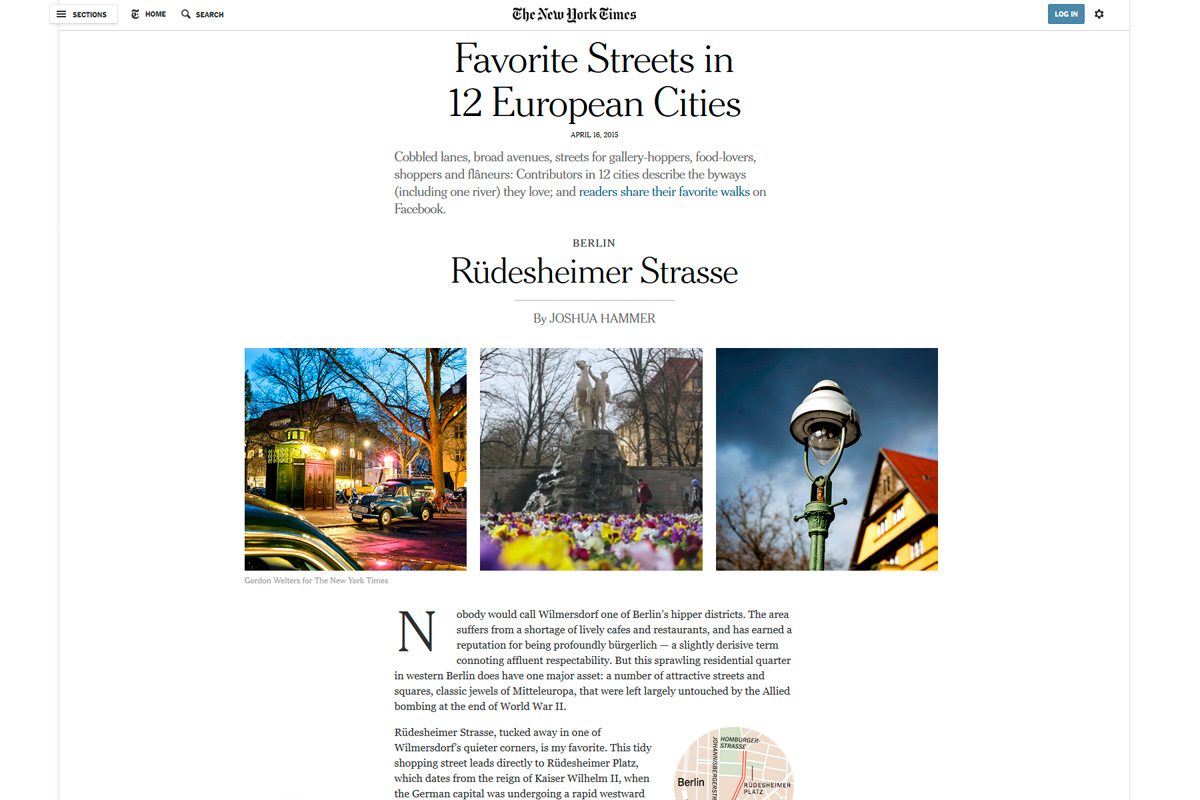New York Times: Rüdesheimer Strasse gekürt

Die New York Times hat 2015 in zwölf europäischen Städten die schönsten Straßen gekürt – und auf Platz 3 ist die Rüdesheimer Strasse in Berlin gelandet. Was für eine Auszeichnung!
Der vollständige Artikel:
Berlin
Rüdesheimer Strasse
By JOSHUA HAMMER
Nobody would call Wilmersdorf one of Berlin’s hipper districts. The area suffers from a shortage of lively cafes and restaurants, and has earned a reputation for being profoundly bürgerlich — a slightly derisive term connoting affluent respectability. But this sprawling residential quarter in western Berlin does have one major asset: a number of attractive streets and squares, classic jewels of Mitteleuropa, that were left largely untouched by the Allied bombing at the end of World War II.
Rüdesheimer Strasse, tucked away in one of Wilmersdorf’s quieter corners, is my favorite. This tidy shopping street leads directly to Rüdesheimer Platz, which dates from the reign of Kaiser Wilhelm II, when the German capital was undergoing a rapid westward expansion into farms and woodlands. An urban developer named Georg Haberland raised financing for the project in 1905, and named the square and area after towns in Germany’s wine-producing Rheingau region. To build it, he hired the German architect Paul Jatzow, known for his English country-style aesthetic, who designed tidy rows of three- and four-story earth-toned apartment buildings with manicured front lawns, carved stone porticoes, red-tile roofs, gables and mock half-timbered facades.
The heart of the platz is an intimate park and flower garden, freshly blooming with pansies and tulips every April. Overlooking the park is a 1911 fountain and a triumvirate of statues that hark back to German myth: Siegfried, the dragon-slaying hero of the epic poem “The Nibelungenlied”; and the allegorical figures Father Rhine and Mother Mosel, symbols of the main rivers that flow through the country’s southern wine-producing region.
For much of the year, Rüdesheimer Platz is a quiet urban oasis, but that aura of tranquillity vanishes between May and September. That’s when the annual Rheingau wine festival, or Weinbrunnen, moves in. Wine producers from across southern Germany and Austria sell their rieslings and spätburgunders from a wooden hut in the square from the afternoon until late evening. On some weekends there is live music and an outdoor market.
The festival has become one of Wilmersdorf’s most popular events, but it hasn’t pleased everybody. Last year one irate Rüdesheimer Platz resident demanded in a court filing that the festival be drastically shortened, claiming that it was disturbing the peace. Five thousand locals signed a petition to keep the festival in place, which means that the wine is likely to keep flowing for a long time to come.
Der Artikel online auf New York Times online.
